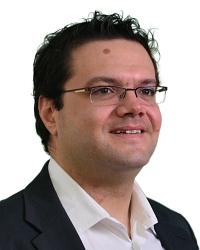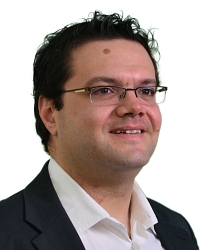TR2018-138
High-Resolution Lidar Using Random Demodulation
-
- , "High-Resolution Lidar Using Random Demodulation", IEEE International Conference on Image Processing (ICIP), DOI: 10.1109/ICIP.2018.8451424, October 2018.BibTeX TR2018-138 PDF
- @inproceedings{Boufounos2018oct,
- author = {Boufounos, Petros T.},
- title = {{High-Resolution Lidar Using Random Demodulation}},
- booktitle = {IEEE International Conference on Image Processing (ICIP)},
- year = 2018,
- month = oct,
- doi = {10.1109/ICIP.2018.8451424},
- url = {https://www.merl.com/publications/TR2018-138}
- }
- , "High-Resolution Lidar Using Random Demodulation", IEEE International Conference on Image Processing (ICIP), DOI: 10.1109/ICIP.2018.8451424, October 2018.
-
MERL Contact:
-
Research Areas:
Abstract:
Recently emerging applications, such as autonomous navigation, mapping, and home entertainment, have increased the demand for inexpensive and high quality depth sensing. In this paper we fundamentally re-examine the problem, considering recent advances in photoelectric devices, increased availability of fast electronics, reduced computation cost, and developments in sensing theory.
Our main contribution is a real-time hardware architecture for time-of-flight (ToF) depth sensors that exploits random modulation to significantly reduce the acquisition burden. The proposed design is able to acquire compressive, critical, or redundant measurements, without requiring any hardware modifications, at the expense of small reduction in the system frame rate. The architecture we propose is sufficiently flexible to be operable in a variety of conditions and with a variety of reconstruction algorithms.
Related News & Events
-
NEWS IEEE-NH ComSig lecture by MERL's Petros Boufounos Date: April 4, 2019
Where: Nashua Public Library, Nashua, NH
MERL Contact: Petros T. Boufounos
Research Areas: Computational Sensing, Signal ProcessingBrief MERL's Petros Boufounos gave a lecture for the IEEE-NH ComSig chapter at the Nashua Public Library as part of the IEEE Signal Processing Society Distinguished Lecturer series.
MERL's Petros Boufounos gave a lecture for the IEEE-NH ComSig chapter at the Nashua Public Library as part of the IEEE Signal Processing Society Distinguished Lecturer series.
Title: "An Inverse Problem Framework for Array Processing Systems."
Abstract: Array-based sensing systems, such as ultrasonic, radar and optical (LIDAR) are becoming increasingly important in a variety of applications, including robotics, autonomous driving, medical imaging, and virtual reality, among others. This has led to continuous improvements in sensing hardware, but also to increasing demand for theory and methods to inform the system design and improve the processing. In this talk we will discuss how recent advances in formulating and solving inverse problems, such as compressed sensing, blind deconvolution, and sparse signal modeling can be applied to significantly reduce the cost and improve the capabilities of array-based and multichannel sensing systems. We show that these systems share a common mathematical framework, which allows us to describe both the acquisition hardware and the scene being acquired. Under this framework we can exploit prior knowledge on the scene, the system, and a variety of errors that might occur, allowing for significant improvements in the reconstruction accuracy. Furthermore, we can consider the design of the system itself in the context of the inverse problem, leading to designs that are more efficient, more accurate, or less expensive, depending on the application. In the talk we will explore applications of this model to LIDAR and depth sensing, radar and distributed radar, and ultrasonic sensing. In the context of these applications, we will describe how different models can lead to improved specifications in ultrasonic systems, robustness to position and timing errors in distributed array systems, and cost reduction and new capabilities in LIDAR systems.
